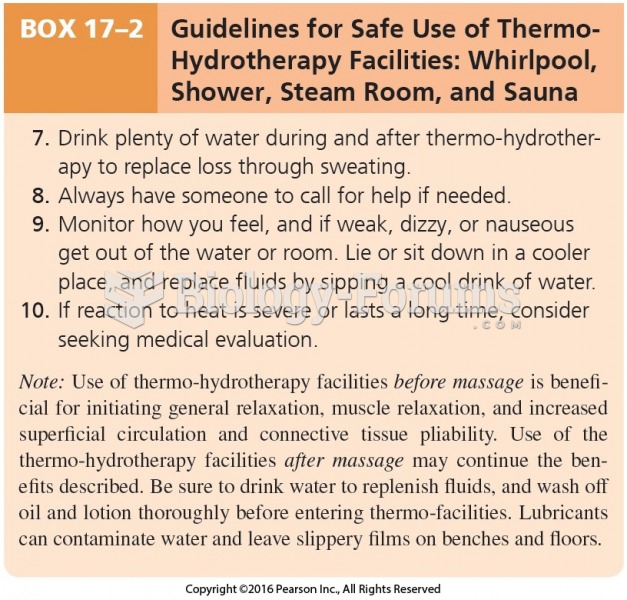|
|
|
People with alcoholism are at a much greater risk of malnutrition than are other people and usually exhibit low levels of most vitamins (especially folic acid). This is because alcohol often takes the place of 50% of their daily intake of calories, with little nutritional value contained in it.
Human kidneys will clean about 1 million gallons of blood in an average lifetime.
Pregnant women usually experience a heightened sense of smell beginning late in the first trimester. Some experts call this the body's way of protecting a pregnant woman from foods that are unsafe for the fetus.
A seasonal flu vaccine is the best way to reduce the chances you will get seasonal influenza and spread it to others.
Congestive heart failure is a serious disorder that carries a reduced life expectancy. Heart failure is usually a chronic illness, and it may worsen with infection or other physical stressors.
 Fights for dominance are normally brief, and sometimes merely displaying dominant gestures without p
Fights for dominance are normally brief, and sometimes merely displaying dominant gestures without p
 Guidelines for Safe Use of Thermo- Hydrotherapy Facilities: Whirlpool, Shower, Steam Room, and Sauna ...
Guidelines for Safe Use of Thermo- Hydrotherapy Facilities: Whirlpool, Shower, Steam Room, and Sauna ...





